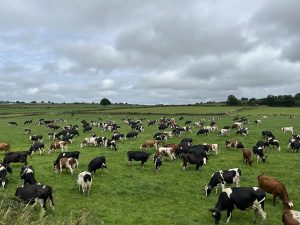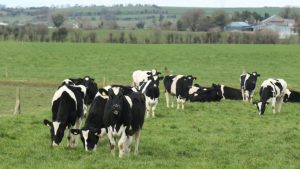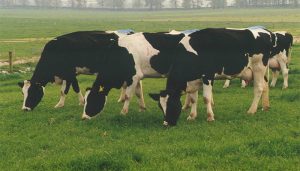
Vaccination is undoubtedly one of the most cost-effective ways to reduce disease within your herd, and it provides optimum protection when carried out correctly.
However, vaccination is only one part of the puzzle, as farmers need to ensure that cows are in good health, receive good nutrition and are in good body condition score (BCS) before vaccination.
Vaccination is not the only method of disease control and should be supported by additional on-farm measures such as biosecurity, diagnostic testing, proper hygiene and adequate nutrition.
The cornerstones of good disease control are:
- Recording herd health status: Keep up to date with disease records, complete annual disease screens using bulk milk, individual milk or individual blood tests, with good stockmanship;
- Biosecurity/bio-containment: Best practice is needed especially when buying/selling animals;
- Vaccination programme: Document all vaccines administered and ensure correct timing and dose rate.
Good disease control will improve time and labour on the farm and will lead to efficiency, lower overall farm costs, and, most importantly, improve animal performance through improved health and welfare.
Vaccination
At a recent Teagasc Dairy Beef 500 webinar titled ‘Preparing your calves for sale in 2025’, ruminant veterinary area manager at MSD, Emma Sargent said that “calf health starts with the cow”.
Sargent spoke about ensuring everything else is healthy with the cow as in terms of a calf scour vaccine, she said “everything else has to go well to transfer full immunity”.
Sargent told attendees that the dry period is the optimal time to give a calf scour vaccine as it ensures that all the protection through colostrum and transition milk is transferred to the calf.
Sargent said that “cows are under high stress before calving and when they are under stress, there is a high risk of them shedding disease”.
She added that “having them vaccinated in advance of the stress period for the likes of IBR or Rotavirus is crucial”, as this will reduce the likelihood of pathogens being shed.
One thing that was highlighted was making sure that the storage and administration was correct with the right temperature, correct mixing all taken into consideration.
IBR and cryptosporidium
Infectious bovine rhinotracheitis (IBR) affects all ages of cattle and once infected, the animal is infected for life and again is dispersed during times of stress.
The MSD vet said that it was her “vaccine of choice” and that a 2ml single dose should be given, and should be given intranasally (IN) or intramuscular (IM) depending on age, as follows:
- Administer IN from two weeks of age to three-months-of-age;
- Administer IN or IM after three-months-of-age;
- Onset of immunity will take fours days for IN and 14 days for IM;
- The duration of the immunity will last for six to 12 months.
The goal of any vaccination is to reduce clinical signs, reduce shedding of infected animals and reduce the number of new infections.
MSD has launched the new Bovilis Cryptium vaccine to protect against Cryptosporidium parvum (crypto scour) which has been 23 years in the making.
The mineral oil vaccination is given as a 2ml dose under the skin and the cow needs to be given a two dose primary course if receiving it for the first time and then one dose thereafter before subsequent calvings.
The product has a 28 day shelf life but again needs to stored at the correct temperature and “not get contaminated with dirty needles”, urged Sargent.
The vaccine can be administered at the same time as Bovilis Rotavec Corona, at different vaccination sites.
The success of this vaccine getting transferred to calves is down to the adequate ingestion of colostrum and transition milk from vaccinated cows.
Sargent recommended that colostrum and transition milk is fed for five days after calving to give the calf “that local immunity and local protection”.
Bovilis Rotavec Corona can be administered to protect against Rotavirus, Corona virus and E.coli and again is a 2ml dose that only needs to be given once as the primary course followed by boosters.
If the Bovilis Cryptium vaccination is administered 12 weeks prior to calving down, it should be followed by the Bovilis Rotavec Corona four to five weeks later or at least three weeks prior to calving.
For the booster vaccination, the Cryptium and the Rotavec Corona can be given together, as long as they are in the window of 12 to three weeks prior to calving.
You can now read the most important #news on #eDairyNews #Whatsapp channels!!!
🇺🇸 eDairy News INGLÊS: https://whatsapp.com/channel/0029VaKsjzGDTkJyIN6hcP1K

























